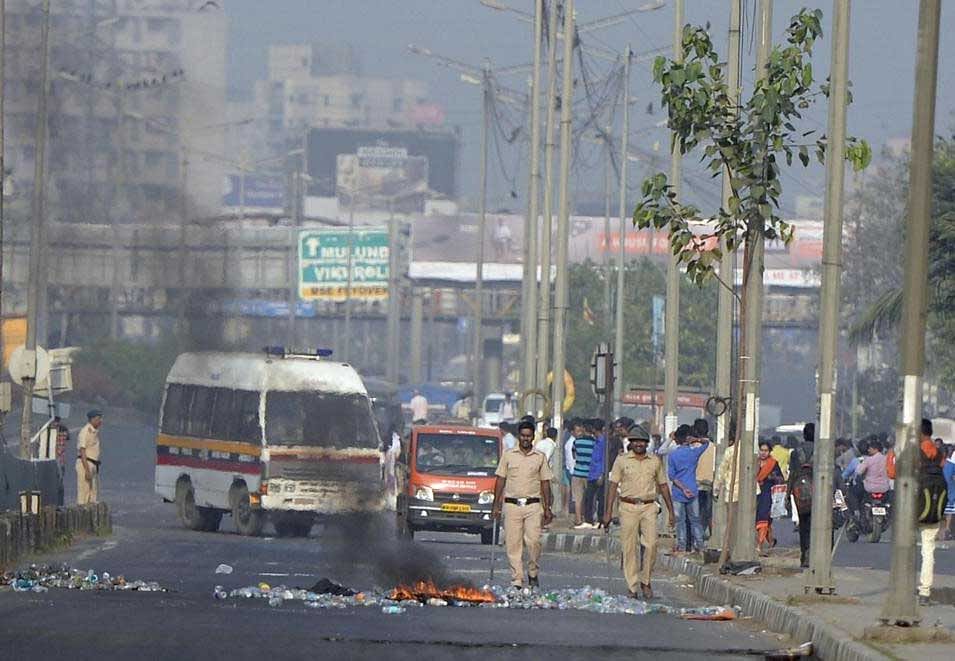
The violence that erupted on January 1 in Maharashtra and continued for a second day was planned well in advance, an eyewitness said.
Somnath Waghmare, director of a documentary film on Bhima Koregaon, is a research scholar at Tata Institute of Social Sciences (TISS), Mumbai.
In an interview with DH, he talks about the violence that shook Maharashtra earlier this week.
What happens every year at Bhima Koregaon?
The celebrations begin on December 31. People throng to the town and stay there overnight. On Jan 1 and 2, Dalit-Bahujan organisations gather and pay homage to a memorial 'stupa'. At night, Buddhist monks and Dalit leaders speak and cultural programmes take place. Lakhs from all over the world visit Koregaon on these two days.
What led to the violence this year?
A month earlier, in December, a committee representing a Peshwa family had requested the police not to allow the Bhima Koregaon battle anniversary, saying it hurts their sentiments. But the police hadn't issued any notice.
On December 29, a Sangh Parivar outfit attacked the tomb of Govind Gaikwad, who had performed the last rites of Sambhajiraje, son of Shivaji, near Koregaon. The next day, the Koregaon village committee asked the police to close entry to the village.
On December 31, a committee representing about 200 organisations conducted an event at Shaniwar Wada in Pune to commemorate the Bhima Koregaon battle. It was addressed by Gujarat MLA Jignesh Mewani, JNU scholar Umar Khalid and others. They spoke against the growing threat of the Hindu right-wing, especially to the lower castes and minorities.
Unlike each year, no Maratha shops and houses on the way to Koregaon were open on January 1. I suspect this was part of a plan orchestrated by the Sangh Parivar to attack Dalits, using Marathas in the frontline.
Why do people celebrate a victory of the colonial British?
The battle of Bhima Koregaon was not just a battle between the East India Company and the Maratha-Peshwas but a decisive fight of the lower castes to achieve social justice.
The Mahars, backbone of the Maratha army since Shivaji, defected to the East India Company army because of the brutal caste discrimination during Peshwa rule. This is an inspiration for all lower castes and others who wish to see equality in Indian society.
Moreover, the battle was against a princely kingdom, not against the Indian nation. It happened long before the concept of Indian nationalism emerged.
We consider the positive aspect of the battle: the victory of lower castes over oppressive rulers. The Indian Army still has a Mahar Regiment formed by the British after the Koregaon battle. The regiment comes and salutes the 'stupa' every year.
Now a middle class has come up among Dalits. They are assertive and question the existing caste-based social order. The Sangh Parivar is not ready to accept the assertive Dalit voice. So they resort to violence.